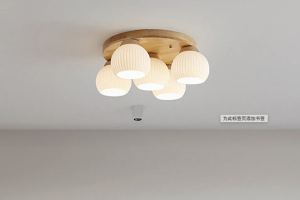The Bold and Eclectic World of Postmodern Interior Design
Postmodernism is a philosophical and cultural movement that emerged in the latter half of the 20th century. One of the disciplines that has been influenced by postmodernism is interior design. Postmodern interior design is characterized by its bold, eclectic, and often playful approach to space, materials, and forms. In this article, we will explore the key features, influences, and examples of postmodern interior design.
Key Features of postmodern Interior Design
Postmodern interior design draws on a range of styles and traditions, often mixing them in unexpected ways. Some of the key features of postmodern interior design include:
- Eclectic mix of materials
- Bold use of color
- Playful use of form and design elements
- Mixing of high and low culture
- Use of irony and subversion
- Focus on individuality and expression
Materials
Postmodern interior design often employs an eclectic mix of materials, including plastic, glass, metal, and natural materials like wood and stone. These materials are often used in unexpected ways, such as plastic furniture with metal accents or natural wood paired with brightly colored plastic.
Color
Postmodern interior design embraces bold and unusual color combinations. Bright primary colors are often paired with black and white to create a striking contrast. Unexpected color combinations like pink and orange, or green and purple, are also common in postmodern design.
Form and Design Elements
Postmodern interior design often plays with form and design elements in unexpected ways, such as geometric shapes or oversized elements. Unexpected design elements, such as a giant chair, can be used to create a sense of playfulness and whimsy in a space.
Influences on Postmodern Interior Design
Postmodern interior design draws on a range of influences, including art movements like Pop Art and Dadaism, as well as architecture and design movements like Art Deco and Bauhaus. These movements all share an interest in breaking down traditional boundaries and exploring new ways of thinking about space and design.
Pop Art
Pop Art emerged in the 1950s and 60s and was characterized by a playful and irreverent approach to popular culture. It often featured bold colors and graphic design elements, which influenced postmodern interior design.
Dadaism
Dadaism emerged in the early 20th century and was characterized by a rejection of traditional values and a focus on absurdity and irrationality. This rejection of established values and conventions is also a hallmark of postmodern interior design.
Art Deco
Art Deco emerged in the 1920s and was characterized by a focus on luxury, elegance, and ornamental design. While postmodern interior design is more eclectic and playful, it still draws on the ornamental qualities of Art Deco design.
Bauhaus
The Bauhaus movement emerged in the early 20th century and emphasized functional design and the use of industrial materials. The focus on functional design influenced postmodern interior design by encouraging a more playful and experimental use of space and materials.
Examples of Postmodern Interior Design
Postmodern interior design can be seen in a range of spaces, from private homes to public buildings. Here are a few examples:
The Memphis Design Movement
The Memphis Design Movement emerged in the 1980s and was characterized by its use of bright colors and playful shapes. It was founded by a group of Italian designers and architects who wanted to create a more expressive and eclectic design aesthetic. Memphis Design has influenced postmodern interior design to this day.
The Pompidou Centre
The Pompidou Centre in Paris is a prime example of postmodern interior design. The building, designed by architects Renzo Piano and Richard Rogers, features an exposed steel structure and colorful pipes and ducts on the exterior, which creates a playful and unconventional look. The interior of the building is similarly eclectic, featuring a range of spaces and design elements.
Philippe Starck
French designer Philippe Starck is known for his playful and eclectic approach to design. His work spans a range of fields, from interior design to furniture design to product design. Starck’s designs often feature unusual forms and materials, such as his iconic Louis Ghost Chair, which combines a traditional form with a modern material.
Conclusion
Postmodern interior design is a playful, eclectic, and often whimsical approach to space, materials, and forms. It draws on a range of influences, from a range of art movements to architecture and design movements. Postmodern interior design continues to influence designers and architects today, and its playful and experimental approach to space and form is still appreciated by many.

